|
|
THE NUT TREES
Bitternut Hickory, Butternut and Black
Walnut
Juglandaceae, The Walnut Family
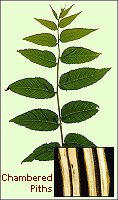 The walnut family has
6 to 7 genera with a distribution
mostly in the northern temperate zone. In the U.P., there are two genera, Juglans
(walnuts) and Carya (hickories) but neither are very common. These
trees have large, edible nuts in thick fibrous husks. The male flowers appear
in catkins. The leaves are
compound and generally quite large.
Juglans is well-known for its high quality wood, valuable for the
appearance. Carya has dense, hard wood, often used for handles and
other implements requiring strength.
The walnut family has
6 to 7 genera with a distribution
mostly in the northern temperate zone. In the U.P., there are two genera, Juglans
(walnuts) and Carya (hickories) but neither are very common. These
trees have large, edible nuts in thick fibrous husks. The male flowers appear
in catkins. The leaves are
compound and generally quite large.
Juglans is well-known for its high quality wood, valuable for the
appearance. Carya has dense, hard wood, often used for handles and
other implements requiring strength.
 BITTERNUT HICKORY
(Carya cordiformis)
BITTERNUT HICKORY
(Carya cordiformis)
Other
Names: Yellowbud, Swamp Hickory
Key ID Features: Leaves, Buds, Twigs, Nuts, Leaf Scars
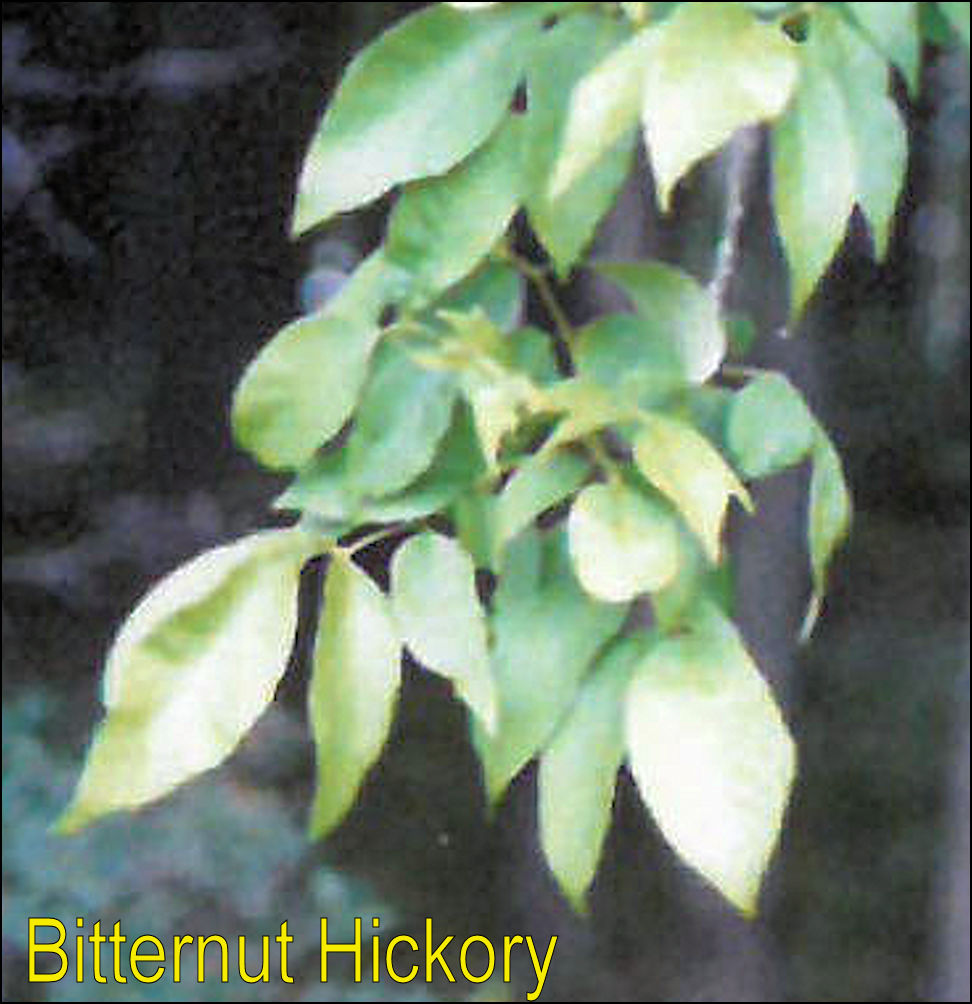
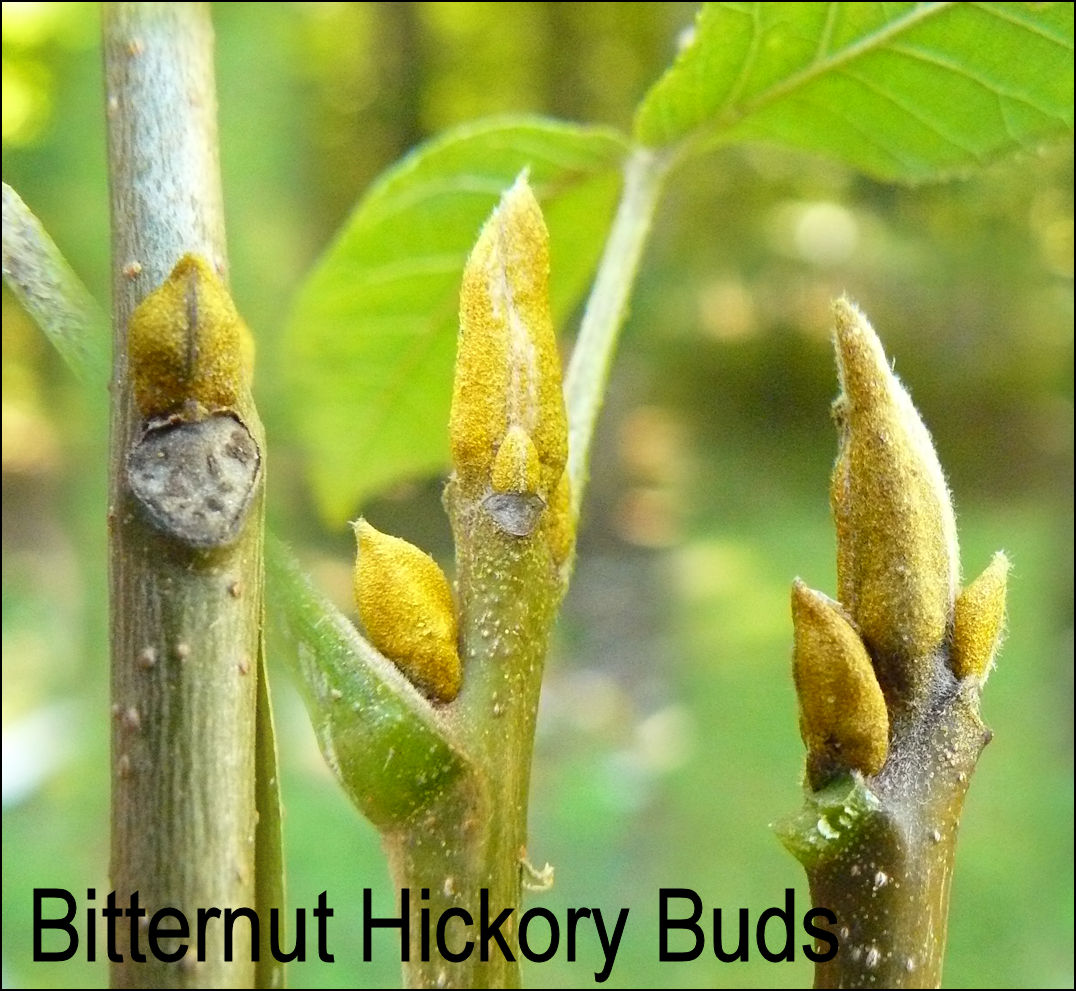
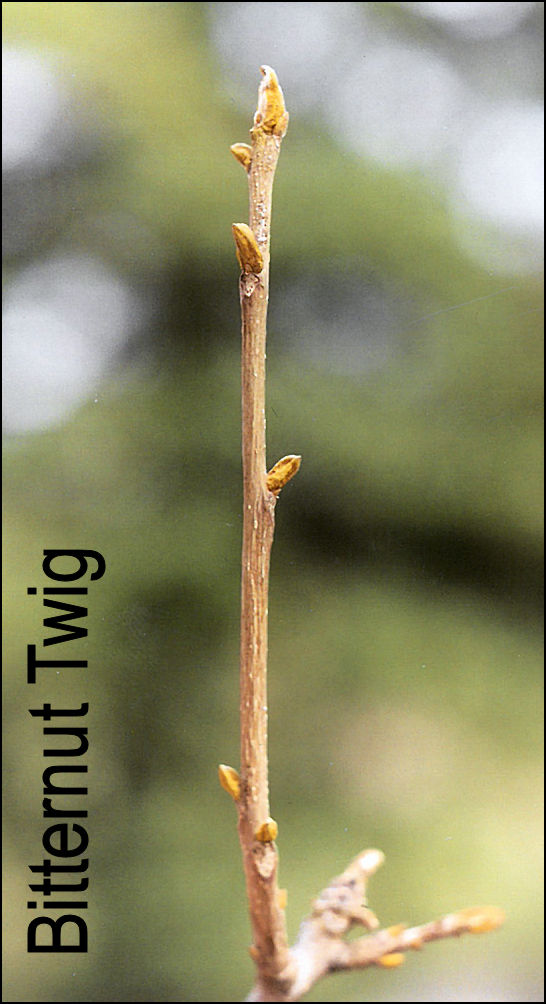
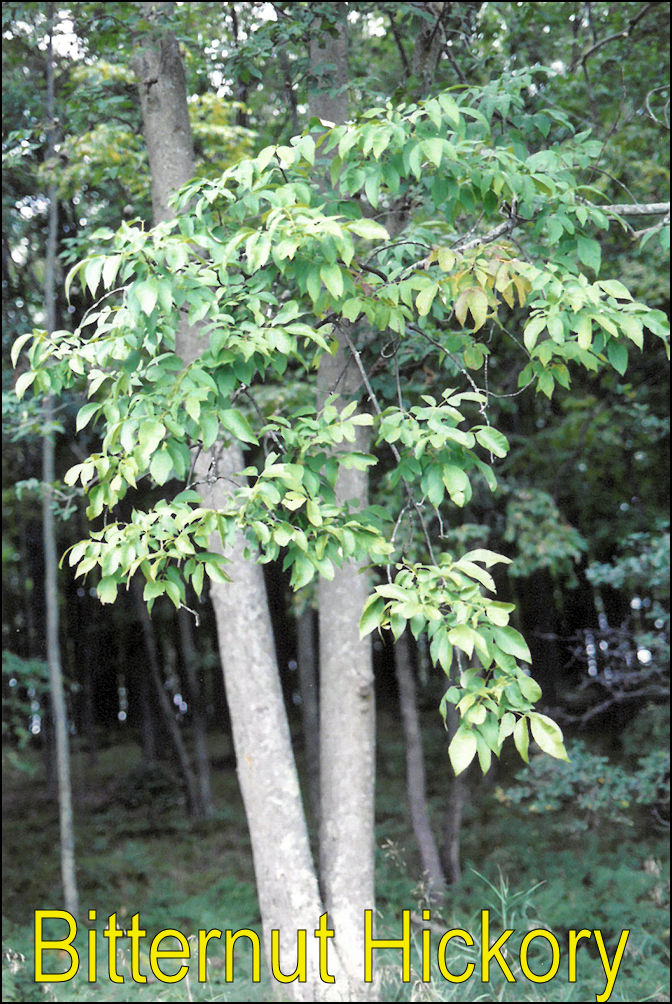

Compound
LEAVES are 7-10 inches long, have 7-11 leaflets, with the largest leaflets at the tip.
Leaflet margins are
toothed and leaflets do not have
stalks. The terminal BUDS are
yellow with a powdery appearance which is why the tree is sometimes called
yellowbud. TWIGS are somewhat stout
with white spots (lenticles).
The large leaf scars are
heart-shaped with three circles of bundle
scars. FRUITS are about an inch across with a four-part husk enclosing a
bitter-tasting hickory NUT. The firm gray BARK stays fairly smooth for years,
eventually developing tight, shallow furrows. Bitternut grows with other upland
hardwoods and is rare in the U.P., occurring mostly in Menominee county. Common pests: bark beetles, hickory decline, drought.
 BUTTERNUT (Juglans
cinerea)
BUTTERNUT (Juglans
cinerea)
Other
Names: White Walnut, Oilnut
Key ID Features: Leaves, Chambered Pith, Nuts
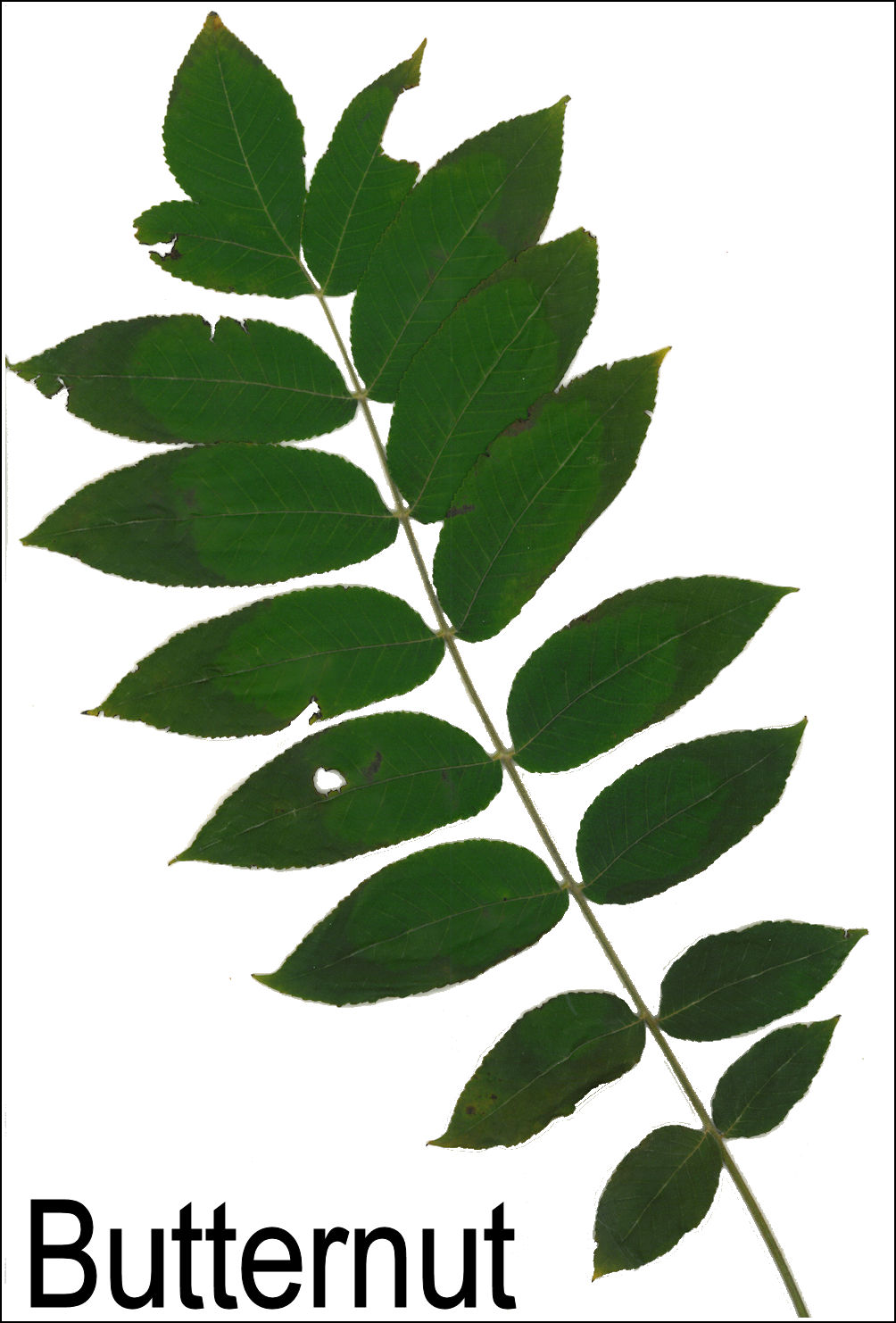
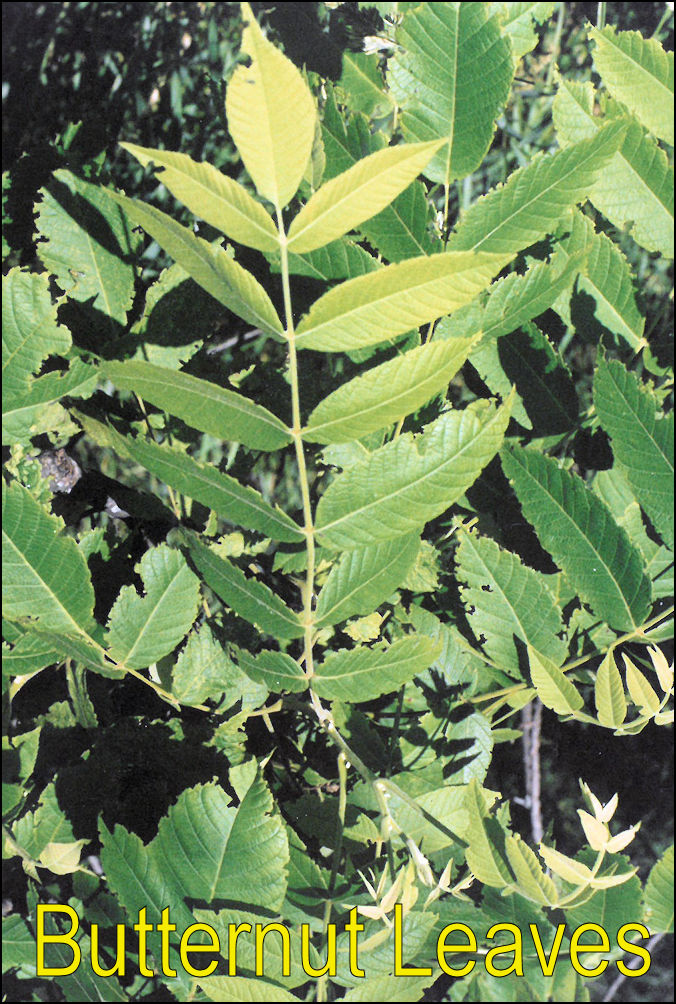
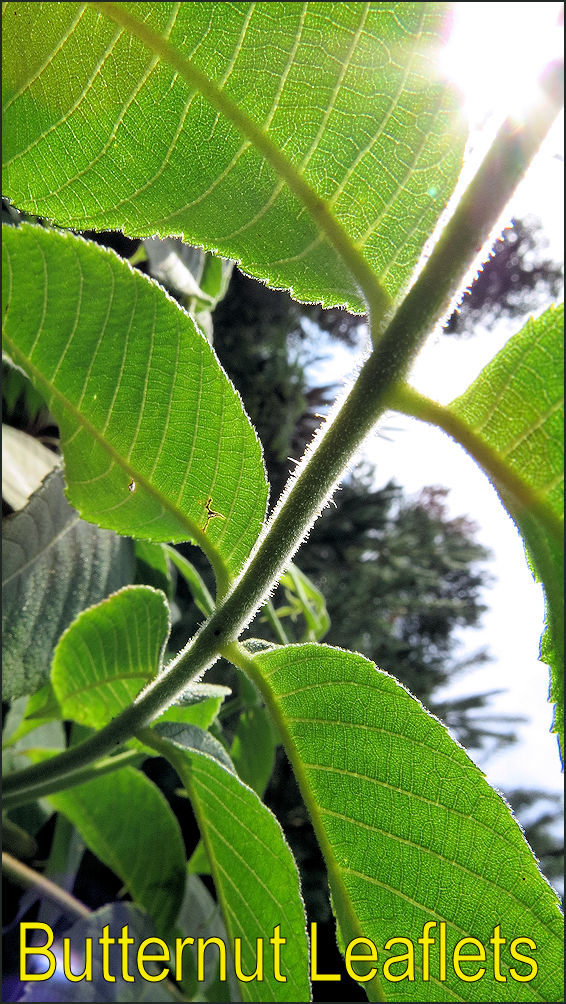
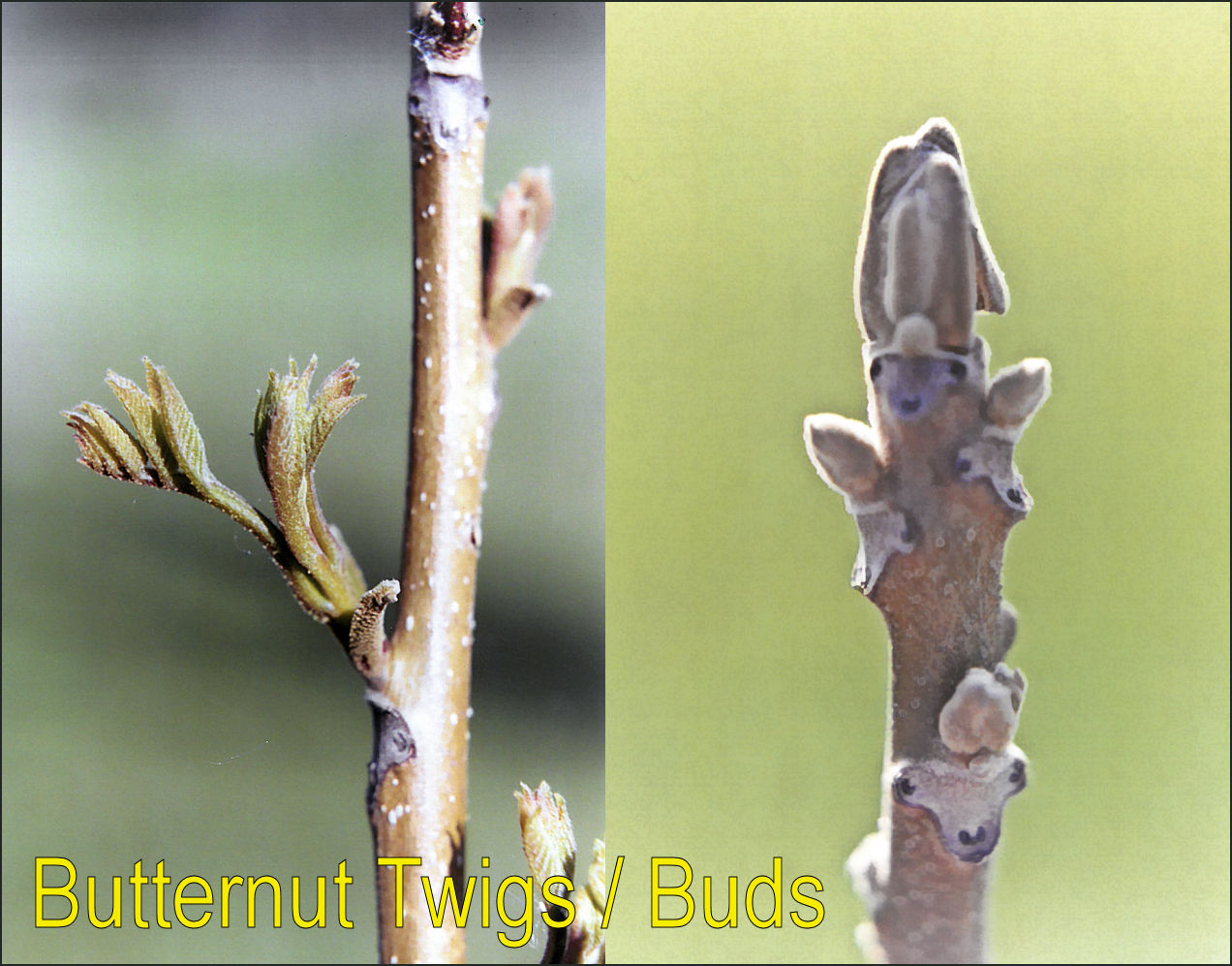
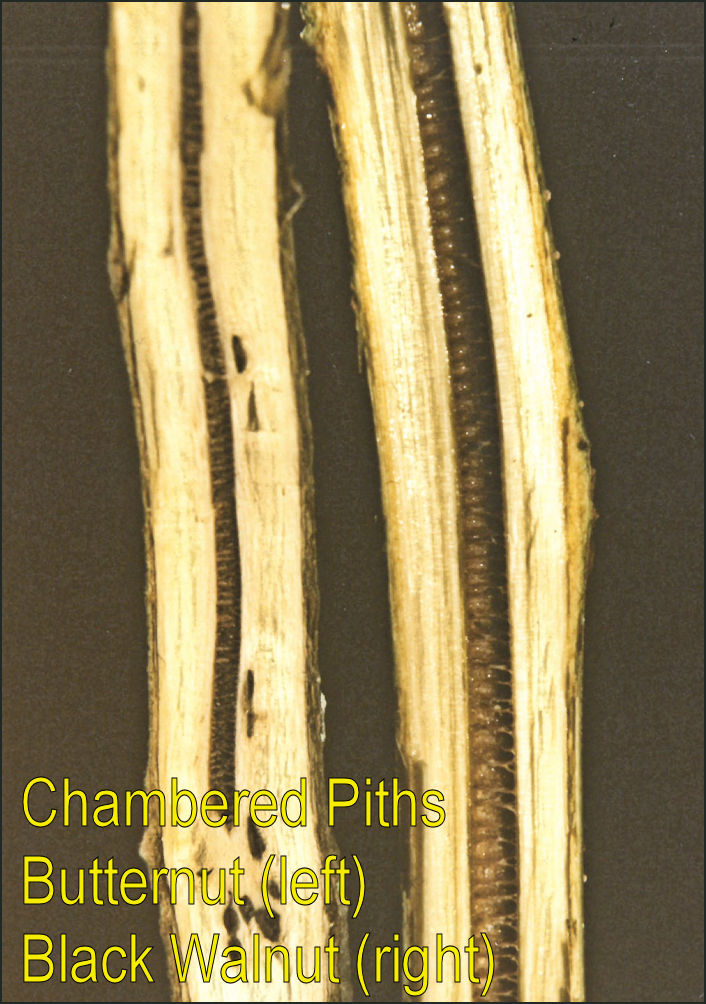
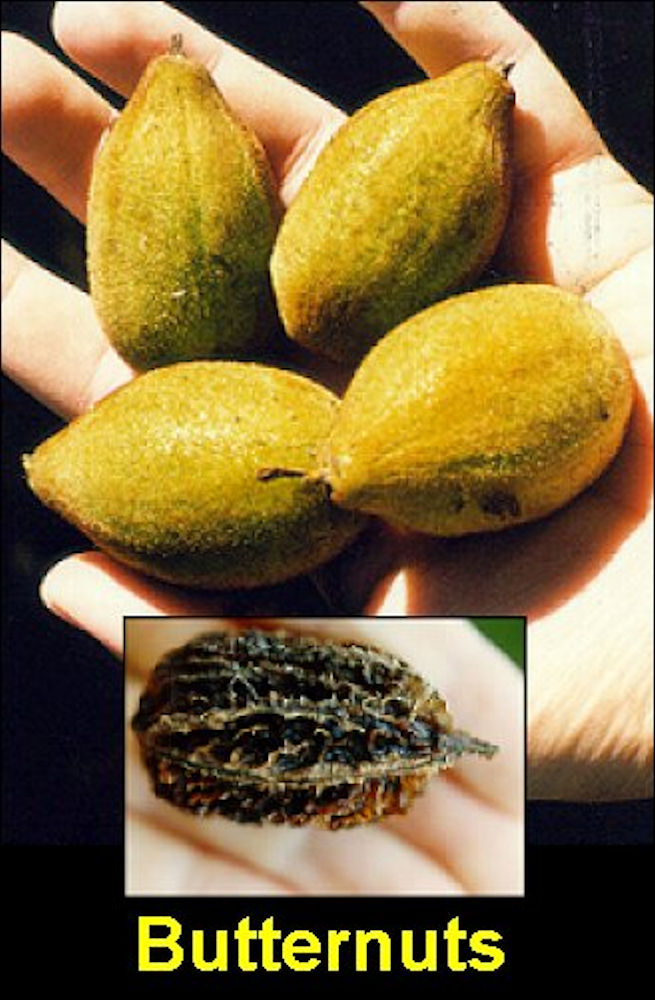
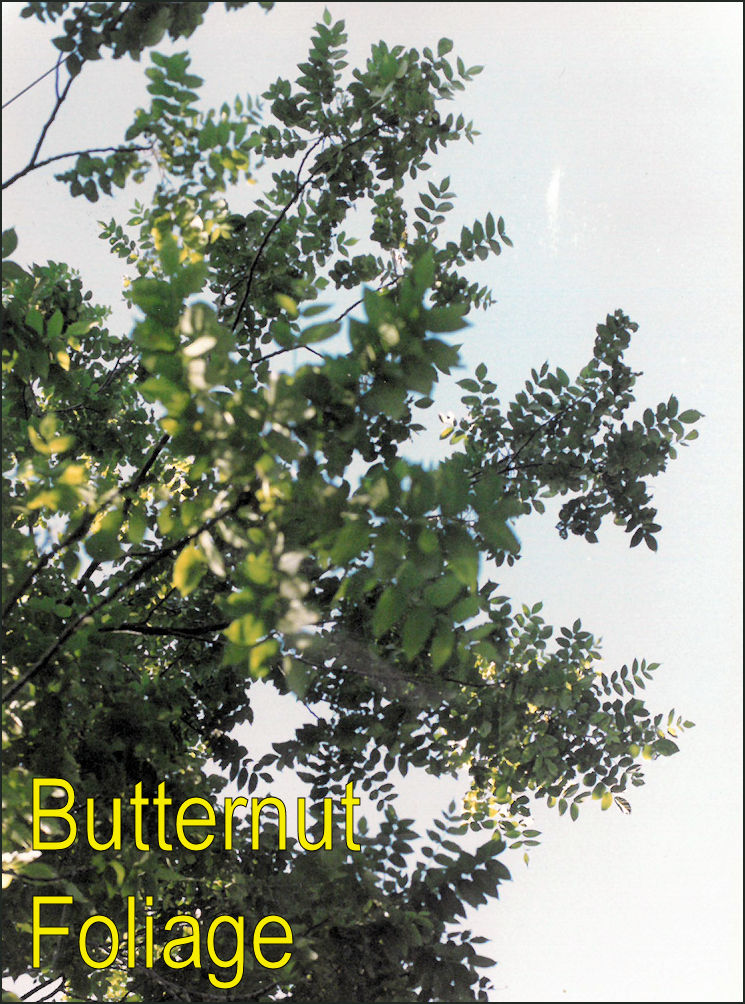

Compound
LEAVES are 15-30 inches long and have 11-17 leaflets. Leaflet margins are
toothed and are without stalks (or
nearly so). The central leaf stalk is fuzzy. The NUTS are oval, about 1-1/2 to
2-1/2 inches long. Husks start out green, sticky, and fuzzy and become dark brown
with age. TWIGS are quite stout
and have a chocolate-colored chambered
pith. Leaf scars
are large with three groups of bundle scars.
Terminal BUDS are about about a
quarter to a third inch long and fuzzy. Side BUDS are knobby. BARK is firm and
light to medium brown. The bark on larger trees is rough and separated by long
raised ridges. Most trees have a disease called butternut canker (Sirrococcus
clavigignenti-juglandacearum) which appears as cracks that are black
inside. A well-formed butternut can grow to 40-60 feet in HEIGHT and 1-2 feet in
DIAMETER. The tree prefers richer, well-drained SOILS and ASSOCIATES with black
cherry, basswood, oak, sugar maple, and yellow birch. Common pests: butternut canker.
BLACK WALNUT
(Juglans nigra)
Other Names: Walnut, American Walnut
Key ID Features: Leaves, Chambered Pith, Nuts

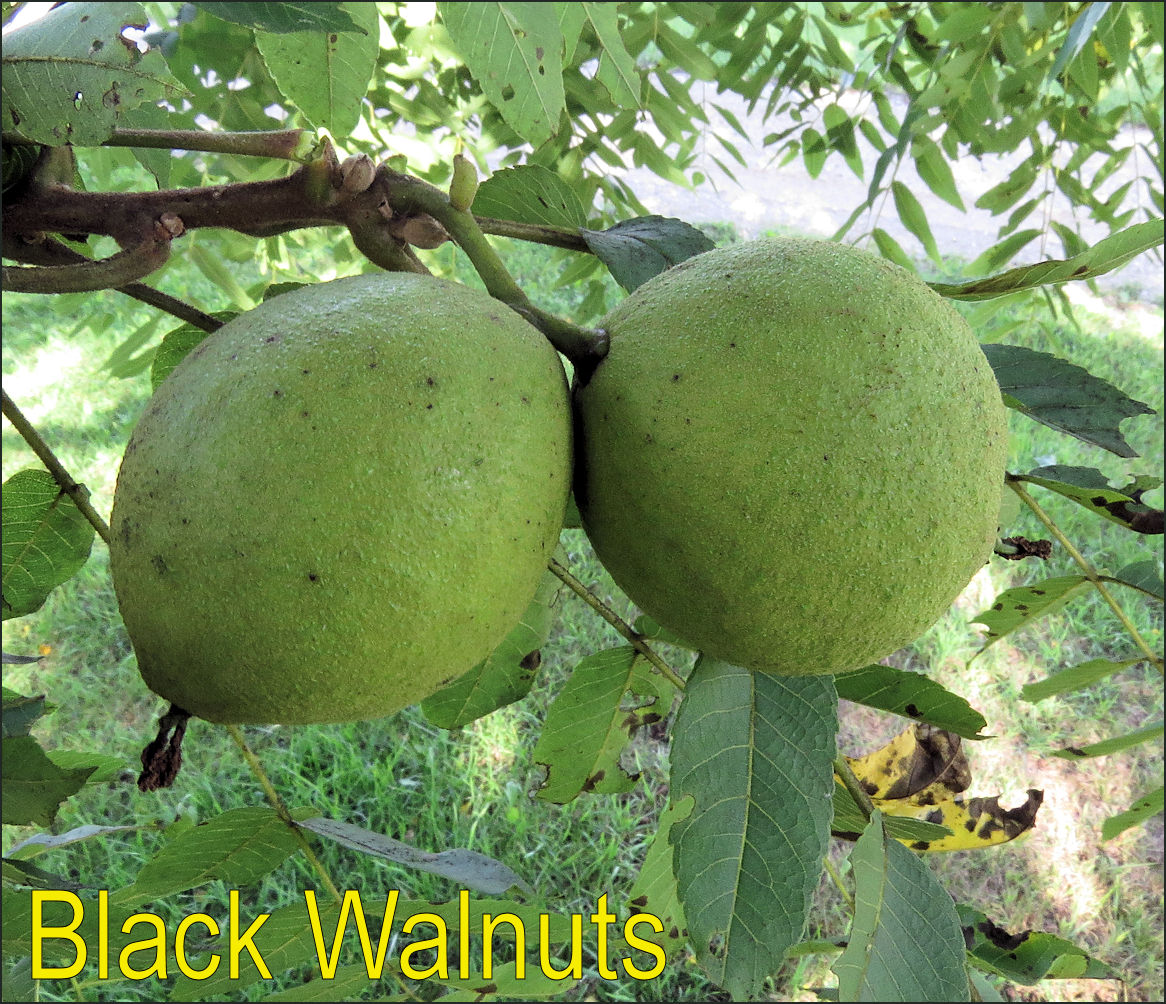
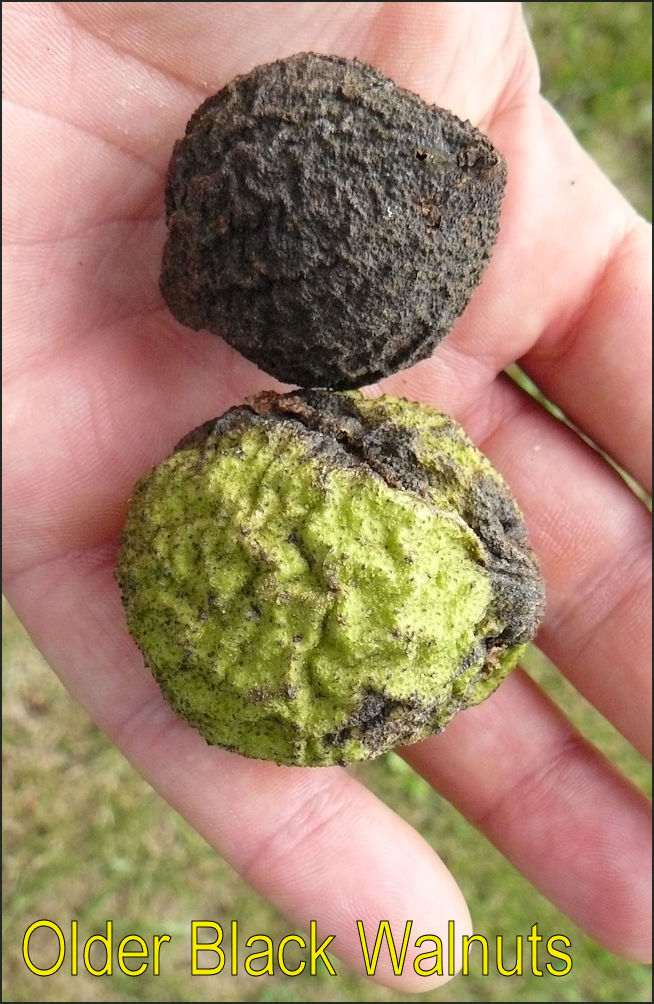
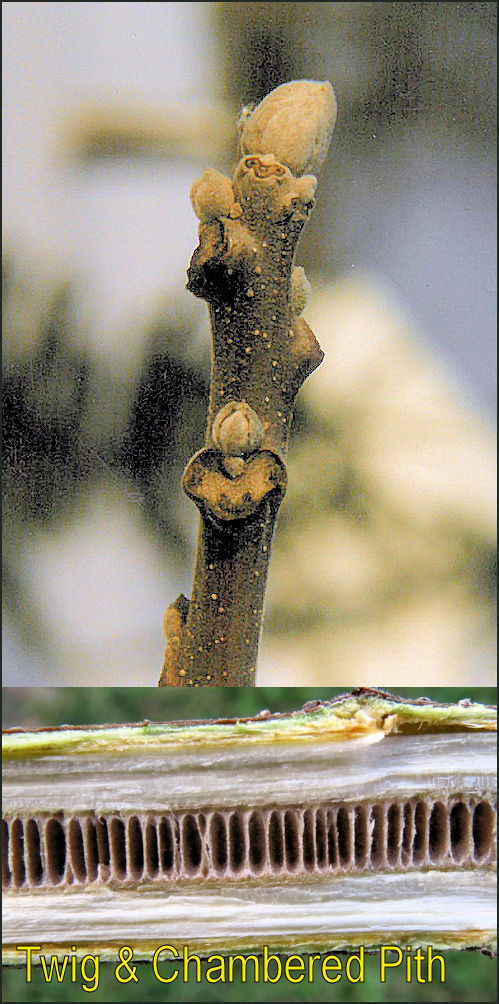
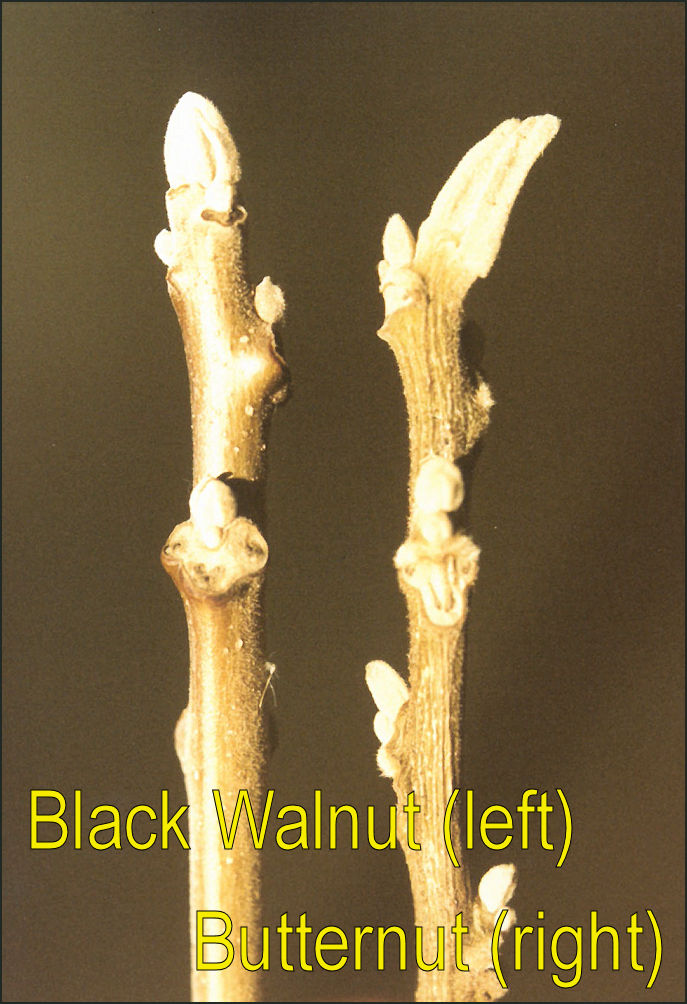

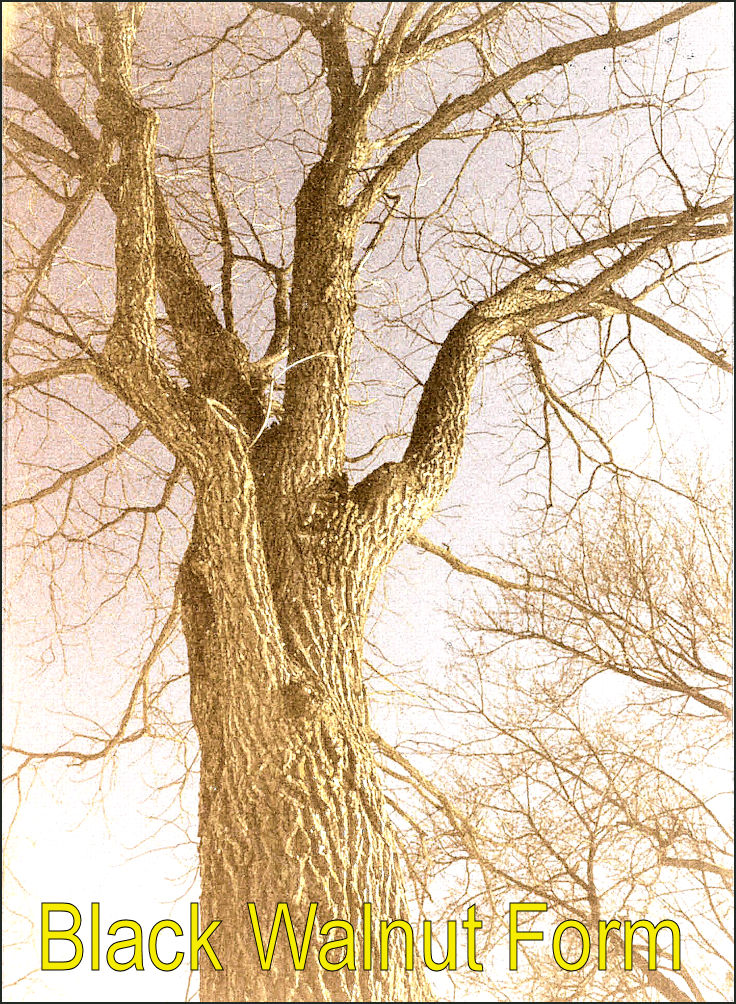
Compound
LEAVES are 12-24 inches long and have 15-23 leaflets. Leaflet margins are finely-toothed and are without stalks (or
nearly so). The NUTS are round, about 1-1/2 to 2 inches long. Husks start out
green, sticky, and fuzzy and become dark brown with age. TWIGS are quite
stout and have a tan-colored
chambered pith.
Terminal BUDS are half the length of butternut
but side buds and leaf scars are
similar. BARK is dark brown or gray with deep furrows closer together than
butternut. Further south, the tree may reach HEIGHTS of 70-90 feet and DIAMETERS of
2-3 feet. However, the U.P. is beyond the natural range of black walnut and occur
only where planted, occasionally in Menominee and Delta counties. Trees that
survive are often of lesser form but sometimes grow large. Black walnut, in its
prime range, produces some of the most valuable timber in the United States. Most of
the "black walnut" in the U.P. is probably butternut. It is not a
component of our U.P. forest. Common pests: 1000 cankers disease.
Click on the blue to return
to the Deciduous Summer Key or the Deciduous
Winter Key.
Click HERE to return to the home page.
A note about the images on this website, click here.
This site created and maintained by Bill Cook, MSU Extension Forester for the Upper Peninsula of Michigan. Editing and modification is ongoing. Submit suggestions, questions, and corrections to cookwi@msu.edu or call 906-786-1575.